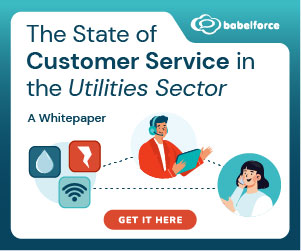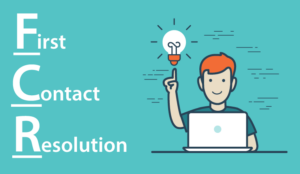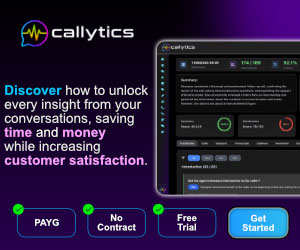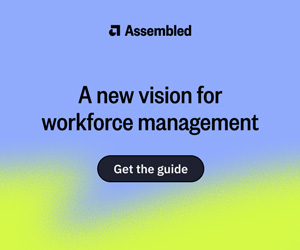When your goal is to solve more customer problems on the first try, the way you route calls in your contact centre becomes critically important.
But getting more calls to the right agent isn’t just about technology – it’s also about team capability.
To find out more, we asked Jack Barton, Head of Marketing at babelforce, to outline two approaches to improve FCR.
Video: Smart Routing: The 2 Key Ways to Route Calls Well
Watch the video below to hear Jack explain smart routing and the two key ways to route calls well:
With thanks to Jack Barton, Head of Marketing at babelforce, for contributing to this video.
This video was originally published in our article ‘Enhance FCR With Smart Routing’
Smart Strategies to Improve FCR
There are two broad approaches that can dramatically improve First Contact Resolution (FCR), each with its own strengths, requirements, and trade-offs.
“Broadly speaking there are two approaches to routing calls really well if your goal is to solve more callers’ problems the first time.”
Here’s how to think about both:
1. Build Smarter, Data-Driven Routing Workflows
The first, and more technology-heavy, approach is to fine-tune your routing methodology so customers reach the right agent immediately.
“First you can just build the absolute hell out of your routing methodology, so that more people get the exact right agent right away.”
Done well, this dramatically improves the chance of solving an issue on the first call. Here’s what it takes:
Instant Access to Contextual Customer Data
You need to know who the customer is, what products or services they use, their recent contact history, and whether they might be a churn risk.
“And for that you need a few things. You need a quick way of automatically accessing contextual data about the customer – Who are they? What do they buy from you? Have they been in touch recently? Are they a churn risk? Anything that could usefully inform where you send them.”
All of this can help determine where to send the call.
Collect Real-Time Caller Intent
Gathering fresh data about why the customer is calling is just as important. For simple options, a traditional IVR may be enough.
But for more complex or varied queries, an AI voicebot offers flexibility, allowing the customer to speak naturally and explain their needs.
“You also need a way for them to provide new data, specifically why are they calling, and what do they want.
You could use traditional IVR for that if your options aren’t complicated, otherwise you might want to use something like an AI voicebot that allows the caller to explain their needs in a more free-form kind of a way.”
Live View of Agent Availability
Smart routing only works if you also factor in the availability of the right agents.
“Now this approach is all technological, and it’s going to eat up a reasonable amount of time to design, test, and build, because you need to look up existing information, you need to fold in new information, you need to get a real-time view of the resources available to you. Do you actually have agents to answer the calls?”
Real-time visibility into who is free and who has the right skills is essential to complete the loop.
Dynamic Workflow Logic
Finally, you need the tools to build conditional workflows.
“And then you need the tooling to build custom workflows that say if the caller is in X category, and has Y requirement, and we have Z resources free, then do whatever the action is.”
For example: If the caller is a high-value customer, wants to discuss billing, and an experienced billing agent is available, route them there immediately. This type of logic ensures the most efficient use of your team and leads to better FCR.
Consideration: This approach requires significant investment in design, testing, and integration. But the payoff is a finely tuned customer journey and a scalable, long-term solution.
2. Cross-Train Agents to Broaden Capabilities
The second strategy takes a lower-tech but equally effective route: make more agents capable of solving more issues.
“Now I mentioned a second approach, and this is the low-tech approach, although it’s not by any means the easier way.”
Instead of focusing all your energy on routing calls to a narrow group of highly specialized agents, you broaden the skill set of your existing workforce.
The idea here is simple: when more agents can handle more types of calls, it matters less who answers the phone.
Develop a Cross-Training Programme
Teach agents how to handle multiple categories of issues, not just one narrow area, which spreads expertise across your team.
“Instead of getting more people to the exact right agent, make more agents capable of fulfilling any caller’s needs – cross-train more agents.”
Balance Workload and Flexibility
With a more versatile team, you can manage high volumes without as much dependency on perfect routing. It also gives you flexibility when unexpected call spikes happen.
Improve First Contact Rates Naturally
If most agents are equipped to handle most calls, your odds of solving problems on the first contact increase, no advanced workflow required.
Consideration: Cross-training takes time, effort, and often increased payroll costs. But if your tech limitations are high, or if your FCR is suffering, it might be the smarter investment.
Choosing the Right Approach
Ultimately, both strategies have merit – and many organizations benefit from using a combination of the two. The decision comes down to a judgement call:
- Is it more cost-effective to invest in smarter routing technology?
- Or will training and upskilling your team deliver better ROI in the long run?
By weighing the cost of tech development against the cost of training, and factoring in the price of poor FCR, you’ll be better positioned to make the right call for your contact centre.
“There is still a cost associated with that, so the question really is whether the cost is more or less than either taking the tech-heavy approach or having a low FCR, whatever cost you believe is associated with that – it’s a judgement call.”
If you are looking for more great insights from the experts, check out these next:
- 5 Strategies to Maximize the Value of Your CCaaS Solution
- Why You Shouldn’t Make Assumptions About Unsociable Hours
- 3 Reasons to Involve Agents in Tech Purchases
- A Sign You Need Speech Analytics
Author: Robyn Coppell
Reviewed by: Xander Freeman
Published On: 22nd Aug 2025 - Last modified: 25th Sep 2025
Read more about - Video, babelforce, Call Routing, First Contact Resolution (FCR), Videos





































